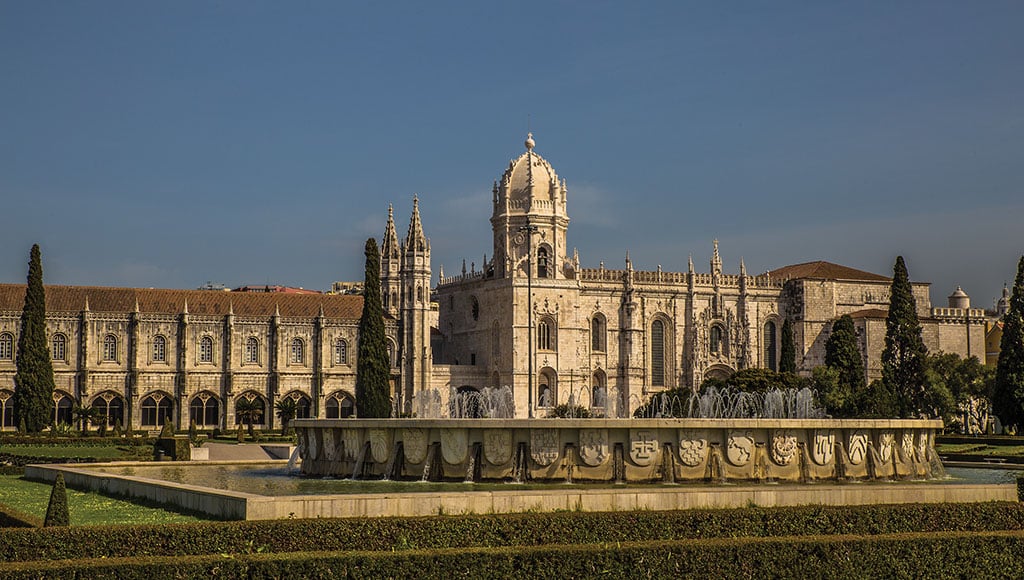Ever since the beginning of time, the founders of a new state have stamped their mastery on the built environment.
New political masters are determined that their government will be remembered through the evidence and clarity of the new style of building and by the majesty of iconic works. One area of the Estado Novo (1933-1974) which receives less attention than it merits is the importance given by Dr Salazar to the historic grandeur of Portugal.
In many respects, Salazar acted in a way similar to other leaders in Portuguese history. The first king of Portugal, D Afonso Henriques, decided to build a church to commemorate the conquest of Santarém from the Moors in 1147. This church later became the Mosteiro de Alcobaça, one of the magnificent Gothic buildings in central Portugal. Consecrated as a monastery in 1262, this church was the first structure used by a Portuguese leader to define his authority.

D João I of Avis occupies a special position which is often not recognised. He founded a new dynasty in 1385 and created the English alliance, but nowadays we chiefly remember him for the Mosteiro de Santa Maria da Vitória at Batalha, founded to acknowledge firstly his decisive victory over Castile at Aljubarrota, and secondly to recognise the divine legitimacy of his accession to the throne.
He intended this church as a mausoleum for his new dynasty, and many of his family and successors are entombed in the Capela do Fundador in the Mosteiro. This first royal pantheon established in Portugal was yet another indication that D João intended that his family should establish itself as the Royal Family. D João and his Queen are interred in this pantheon, together with his immediate successors and all of his family – except for his son D Duarte.
To commemorate his own reign, his eldest surviving son D Duarte, in 1434, chose to build a different mausoleum for himself and his wife, the Infanta Leonor de Aragão. D Duarte commissioned Huguet, the current master mason at Batalha, to design and begin work on his proposed mausoleum beyond the high altar at Santa Maria da Vitória at Batalha.
Unexpectedly struck down by the plague at age 47, D Duarte died before it could be completed. Successor kings (D Afonso V, D João II, D Manuel I and D João III) each contributed to the structure, but this immense and beautiful octagonal mausoleum to one of the kings of the Avis dynasty has never been finished and has, therefore, been known for years as the Capelas Imperfeitas, and this mausoleum had to wait nearly 500 years for its intended occupants.
It was the government of Salazar which decided to honour the intention of D Duarte – not the completion of the Capelas Imperfeitas, which remain unfinished and open to the sky – but sometime in the 1940s it was arranged that the remains of D Duarte and his Queen should be exhumed and re-buried in the mausoleum he had originally planned for himself.
The Mosteiro dos Jerónimos de Belém was founded in about 1499 by D Manuel I. His nickname is O Venturoso, a term usually translated as The Fortunate. A better term would be Lucky, since he was the ninth child of a cadet line, and nine people would have to die before he became heir to the throne. And after he became king at the right time to exploit the Portuguese explorations, or as they are known in Portugal, the Discoveries, he became very rich. Both the Jerónimos, the most famous example of the Manueline style of Portuguese Gothic, and the neighbouring Torre de Belém, were built during his reign and both buildings have become metonyms for the city of Lisbon.

When in 1581 D Felipe I ascended the throne of Portugal (which he occupied in addition to the throne of Castile), as the first king of the Habsburg dynasty in Portugal, he also planned the foundation of a truly astonishing monument to commemorate his power. Work on the Mosteiro de São Vicente de Fora began in about 1590 and finished remarkably soon for its inauguration in 1629. Completed in the Mannerist style, this imposing structure of the Philippine dynasty continues as a reminder that during the dark days of the 17th century, Portugal was ruled by the kings of its ancient enemy Castile.
The next government to demonstrate both stability and pride in its achievements was the Estado Novo, the revolutionary republican government headed by Salazar.

An event which demanded a great deal of time and energy was the celebration of The Portuguese World Exhibition in 1940. That year was chosen to commemorate 800 years of Portugal as a Christian nation; 300 years since the re-establishment of Portuguese independence from Spain; and the current renovation of Portuguese nationhood under the leadership of Dr Salazar. The permanent replacement of the Monument of the Discoveries was inaugurated in 1960, on the opposite side of the river from the new monument to Cristo-Rei (inaugurated in 1959), and they were connected by the new suspension bridge over the Tejo in 1966 (initially called the Ponte Salazar, but now called Ponte 25 Abril).
These three monuments proudly dominate Lisbon’s riverside. But nowadays, how many people recognise that they are symbols which memorialise perhaps Portugal’s most unpopular government?
By Peter Booker
|| features@portugalresident.com
Peter Booker co-founded with his wife Lynne the Algarve History Association.
www.algarvehistoryassociation.com




















